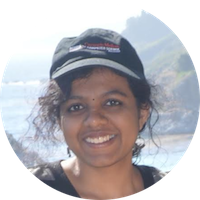HOW TO CHECK A PHYSICAL BITCOIN
Q: What is the situation will all the different course numbers and sections (15-388, 15-688 A/B)?
A: The demand for this course has been very right: as of the start of classes there are more than 250 people registered or on the waitlist for the course. We're thrilled about the level of interest, but unfortunately the only available classroom during this time fits at most 136 students.
To accomodate as many as people as possible, we created a section DNM (Does Not Meet) section of the 600 level course, which is the B section of the 15-688 course. This version is identical to the A section, except that students are expected to watch the lectures online (all lectures will be available online within a few hours after the end of class). We expect that attendance will shake out significantly during the first few weeks of the course, and our strong suspicious is that after the first month, there will be space in the lecture hall for anyone (from any section), to attend lectures, but we ask that until we make this clear, students in the B section not regularly attend lecture.
Q: I really want to take the in-person 15-688 Section A. Will I be able to get off the waitlist?
See above. We want to accomodate absolutely as many people as possible, but are ultimately limited by the classroom size (and following university policy, the undergraduate lectures have priority for in-class attendence). However, we really want to emphasize that the courses are exactly the same except for the in-class lecture and DNM section (same credit, same homeworks, same office hours, same access to TAs/professor, same tutorial and final project assigments, etc), and there is a good chance that Section B students will end up even being able to attend lectures by the middle of the semester. So please consider enrolling in Section B if you are in this position.
Q: I'm on the waitlist for the 15-388 version. Will I be able to get off the waitlist?
Yes, almost definitely. There is a relatively small waitlist for the 300 version currently, and we absolutely expect all students who stick around a few weeks to get off the waitlist.
Q: How does the 5% class participation grade work for students in the DNM section?
Given the size of this course, for all students (including 15-388/15-688A students) the class participation grade will be based upon participating in the course forums on Piazza, not upon speaking up in class.
Q: Is there a pointer to materials from a previous year?
A: No, Fall 2016 is the first time this course is being offered, so we don't have past materials to look over. Feel free to contact the instructors if you have questions about the content of the course which aren't answered here.
Q: Does this course count toward the MSCS AI requirement?
A: (Corrected version). We still need to confirm whether this will be the case or not. We'll update the website and soon as we know, and please email us if this situation affects you.
Q: Will the course be offered during the spring semester?
A: No, the soonest the course will be offered again is during Fall 2017.
Q: Will this course focus mainly on applying techniques from existing libraries to practical data science problems, or writing the underlying algorithms from scratch?
A: Both, to a certain extent. There will be plenty of focus on applying algorithms (often best used through existing libraries) to practical problems, but these libraries can be used more effectively when you understand the underlying algorithms well enough to implement them yourself. So, at least for the more straightforward algorithms that we cover, you will be implementing these yourselves. The 688 level course assignment will do a bit more of this underlying implementation than the 388 level course.
Q: I have a question that wasn't asked here.
A: Come to office hours, or ask on the course Piazza.



